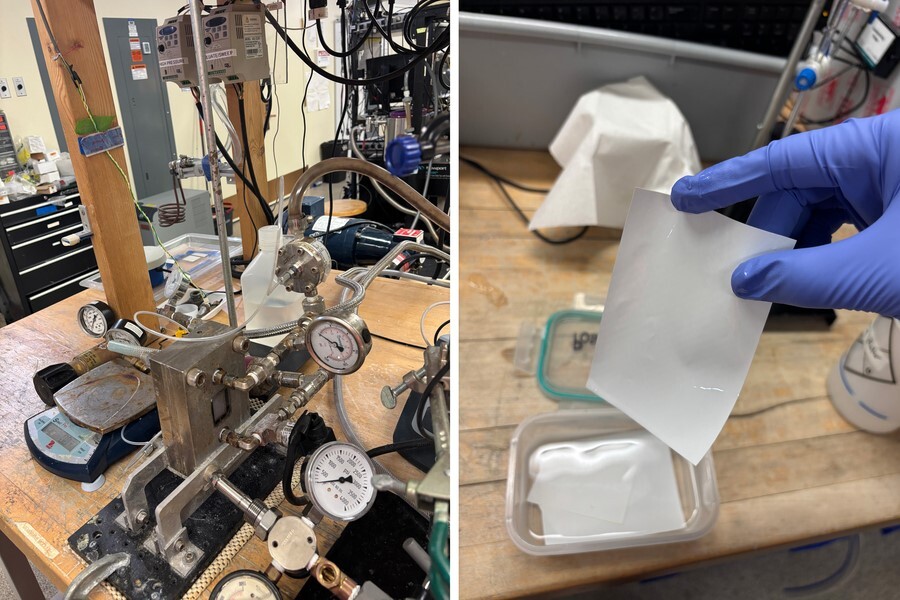

MIT engineers have developed a nanofiltration process that enhances aluminium production efficiency while minimising hazardous waste. This innovative method processes waste from aluminium plants, recovering aluminium ions that would otherwise be lost in the effluent stream.
 Image Source - MIT website
Image Source - MIT website
About the process
The retrieved aluminium is upcycled and reintegrated into the primary aluminium production process. By reintroducing the captured aluminium into the electrolysis vat without introducing excessive by-products, the process maintains the speed and efficiency of electrolysis, simultaneously reducing waste and increasing overall yield.
The researchers employed an innovative membrane to filter solutions mimicking the waste streams generated by aluminium plants. Their tests revealed that the membrane successfully captured over 99 per cent of aluminium ions from these solutions.
Specifically, the MIT-engineered membrane targets cryolite waste, a by-product of aluminium production that hampers efficiency. The process efficiently recovers aluminium ions lost in the cryolite waste while allowing other by-products and ions, such as sodium, to pass through. Remarkably compact, the experimental membrane is roughly the size of a playing card.
Collaboration with Nitto Denko
The filter's design draws inspiration from membranes used in conventional water treatment plants. These membranes are crafted from thin sheets of polymer material perforated with nanometer-sized pores. The surface of conventional membranes naturally carries a negative charge, enabling them to repel negatively charged ions while allowing positively charged ions to pass through.
"This membrane technology not only cuts down on hazardous waste but also enables a circular economy for aluminium by reducing the need for new mining. This offers a promising solution to address environmental concerns while meeting the growing demand for aluminium," said John Lienhard, the Abdul Latif Jameel Professor of Water in the Department of Mechanical Engineering and director of the Abdul Latif Jameel Water and Food Systems Lab (J-WAFS) at MIT.
Collaborating with the Japanese membrane company Nitto Denko, the MIT team investigated the effectiveness of commercially available membranes in filtering cryolite wastewater. Their goal was selectively allowing the most positively charged ions to flow through while repelling and capturing aluminium ions precisely.
"A lot of this cryolite waste stream comes at different levels of acidity. And we found the membrane works really well, even within the harsh conditions that we would expect," added Zi Hao Foo, co-author of the project.
Aluminium ions carry a higher positive charge of +3, compared to the +1 charge of sodium and other cations. The team tested an innovative Nitto Denko membrane featuring a thin, positively charged coating to address this. This coating is precisely tuned to be sufficiently positive to strongly repel and retain aluminium ions while allowing ions with lower positive charges, such as sodium, to pass through.
Responses








